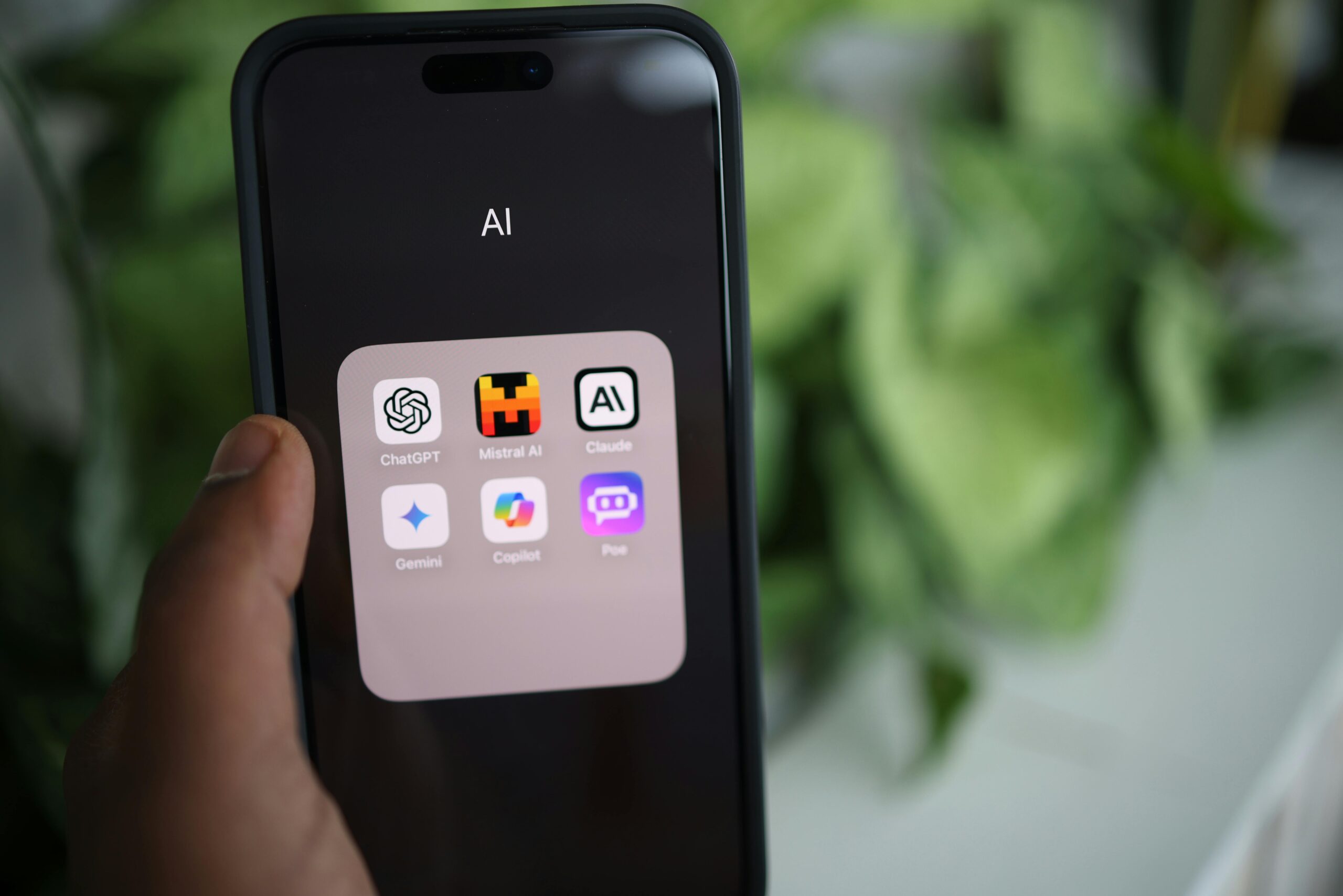Your 2025 Tech Playbook for Business
The 2025 Tech Playbook: Navigating the Future of Digital Innovation for Business Growth
Estimated Reading Time: 18-22 minutes
Key Takeaways
- Embrace 2025 Tech Trends: Businesses must strategically adopt advancements in web, mobile, cloud, and AI for survival and growth.
- AI-Powered Automation is Critical: Leverage AI for customer service, content creation (generative AI), and business process optimization to scale operations and reduce costs.
- Modern Web & Mobile are Fast & Personalized: Focus on next-gen frameworks (Next.js, Flutter/React Native), headless CMS, and experience-first UI/UX design with strong accessibility.
- Cloud & DevOps Drive Efficiency: Serverless architecture, CI/CD automation, and microservices are essential for scalability, cost-efficiency, and rapid software delivery.
- AITechScope as a Strategic Partner: Utilize specialized virtual assistant services for AI-powered automation, workflow development, and optimization to navigate digital transformation.
Table of Contents
- The 2025 Tech Playbook: Navigating the Future of Digital Innovation for Business Growth
- The Evolving Landscape of Web Development in 2025
- Mobile App Development: Innovation and Cross-Platform Dominance in 2025
- Cloud Computing and DevOps: Powering Scalability and Efficiency
- AI Automation for Businesses: Intelligent Delegation and Growth
- Modern UI/UX Design: Crafting Seamless Digital Experiences
- Digital Transformation and Innovation for Businesses of All Sizes
- Frequently Asked Questions (FAQs)
- What are the biggest web development trends expected in 2025?
- Which mobile app development framework is better for startups in 2025, Flutter or React Native?
- How can small businesses leverage AI automation to save time and money?
- What are the key benefits of adopting serverless architecture for businesses?
- How can AITechScope help my business adapt to these 2025 tech trends?
- What is headless CMS, and why is it important for modern web development?
- Conclusion: Embracing the Future with AITechScope
The digital world is not just evolving; it’s undergoing a seismic transformation. As we step into 2025, the pace of technological advancement shows no signs of slowing down, bringing with it unprecedented opportunities and challenges for businesses of all sizes. From the smallest startup seeking a swift market entry to established enterprises aiming for large-scale digital transformation, understanding and strategically adopting the right technologies is paramount for survival and prosperity.
This comprehensive guide serves as your 2025 tech playbook, breaking down the most impactful trends across web development, mobile app innovation, cloud computing, DevOps, AI automation, and modern UI/UX design. We’ll explore how these advancements are not merely incremental improvements but fundamental shifts that redefine how companies operate, interact with customers, and innovate. Whether you’re a business owner seeking to future-proof your operations, a developer eager to master the next generation of tools, or a tech enthusiast looking to grasp the bigger picture, this article offers deep dives and actionable insights.
At AITechScope, we understand that navigating this complex landscape can be daunting. As a leading provider of virtual assistant services, specializing in AI-powered automation, n8n workflow development, and business process optimization, we are uniquely positioned to help businesses leverage these cutting-edge AI tools and technologies. Our mission is to empower companies to scale operations, reduce costs, and improve efficiency through intelligent delegation and automation solutions, ensuring you don’t just keep up with the future, but actively shape it.
Let’s embark on a journey to uncover the 2025 tech trends that will define the digital economy.
The Evolving Landscape of Web Development in 2025
Web development continues to be the bedrock of digital presence, but its evolution in 2025 is marked by a relentless pursuit of speed, personalization, and seamless user experiences. The focus has shifted from simply having a website to delivering a performant, intelligent, and highly engaging digital platform.
Next-Gen Frameworks and Performance Optimization
The foundation of modern web experiences lies in robust and efficient frameworks. In 2025, Next.js and React performance remain at the forefront, offering developers powerful tools to build dynamic, scalable, and incredibly fast web applications.
Next.js: The Go-To for Speed and Scalability
Next.js, built on React, continues its reign as a preferred framework, especially for businesses prioritizing SEO, speed, and developer experience. For small businesses, Next.js presents an unparalleled opportunity. As detailed in “Next.js for Small Businesses: Build a Fast Marketing Site in One Weekend,” its capabilities for server-side rendering (SSR) and static site generation (SSG) mean marketing sites load almost instantaneously, providing a significant edge in user engagement and search engine rankings. If you’re looking for a fast marketing site Next.js is often the answer, offering a streamlined path from concept to deployment. For newcomers, a Next.js beginner guide can quickly get you up to speed with its powerful features.
Performance optimization isn’t just a buzzword; it’s a critical factor in user retention and conversion. Techniques like code splitting, image optimization, lazy loading, and intelligent data fetching are standard practices. “5 Simple React Performance Fixes That Reduce Page Load by Seconds” highlights that even minor adjustments can lead to significant improvements, mirroring real-world successes where “Real-World Case Study: How We Cut Page Load by 60% for a Client” showcases the tangible impact of dedicated optimization efforts.
AI-Powered Web Apps: Beyond Static Content
The integration of AI-powered web apps is moving beyond simple chatbots. In 2025, AI is embedded into core functionalities, enabling personalized user interfaces, predictive analytics for content delivery, intelligent search functions, and adaptive layouts. Imagine a website that anticipates user needs before they even click, or an e-commerce platform that dynamically adjusts product recommendations based on real-time emotional cues analyzed through user interaction patterns. This shift makes web applications smarter and more responsive, enhancing the overall user journey.
Micro Frontends: Modularity for Enterprise Applications
For larger, complex applications, microservices architecture extends to the frontend with micro frontends. This approach allows independent teams to develop, deploy, and manage distinct parts of a user interface, akin to microservices on the backend. While offering benefits in terms of team autonomy, scalability, and technology diversity, “Micro Frontends: When They Help and When They Hurt (Practical Examples)” cautions that they introduce complexity in integration and deployment. However, for organizations seeking high modularity and distributed development, they represent a powerful pattern for enterprise digital adoption.
Headless CMS and Content Flexibility
Content is king, but how it’s managed and delivered is undergoing a revolution. Headless CMS WordPress and other headless solutions are gaining immense traction in 2025.
Decoupling Content from Presentation
A headless CMS decouples the content repository (the “head”) from the presentation layer (the “body”). This allows businesses to use a single content source to feed multiple frontends – websites, mobile apps, smart displays, voice assistants – with unparalleled flexibility. For example, using a headless WordPress setup means you get the familiarity and ease of use of WordPress for content authors, without being tied to its traditional frontend. “WordPress Without the Bloat: Lightweight Plugins That Actually Help SEO” becomes even more relevant here, as a headless setup naturally minimizes frontend overhead, allowing developers to build lightning-fast, highly optimized presentation layers with frameworks like Next.js or React. This approach boosts performance optimization techniques and creates highly tailored user experiences across diverse platforms.
Responsive UI Design and Accessibility
In 2025, modern UI/UX design principles dictate that digital experiences must be universally accessible and flawlessly responsive across all devices.
Beyond Mobile-First: Experience-First Design
Responsive UI design is no longer an afterthought but a core tenet from conception. Users expect a consistent, intuitive experience whether they’re on a desktop, tablet, foldable phone, or even a smart TV. This means designing for adaptability, not just static breakpoints. Furthermore, accessible design is paramount. Ignoring accessibility alienates a significant portion of potential users and can lead to legal ramifications. “Designing Accessible Buttons: A Non-Designer’s Guide (Figma Tips)” underscores the practical steps developers and designers can take to ensure inclusive design, from proper color contrast to keyboard navigation and semantic HTML. This commitment to accessibility is a key component of ethical and effective digital transformation strategies.
Mobile App Development: Innovation and Cross-Platform Dominance in 2025
Mobile applications continue to be the primary interface for billions, and 2025 witnesses intensified innovation in how these apps are built, experienced, and integrated into our lives. The drive is towards seamless, highly personalized, and performant mobile experiences.
Flutter vs. React Native: The Battle for Cross-Platform Supremacy
The debate over the best cross-platform mobile development framework rages on, but in 2025, both Flutter and React Native have matured significantly, each offering compelling advantages.
Choosing the Right Framework for Your Business
The question of “React Native vs Flutter 2025: Which Is Best for Your Business App?” depends heavily on specific project requirements, team expertise, and long-term vision.
- Flutter, backed by Google, offers excellent performance often comparable to native apps, thanks to its compilation to native ARM code. Its “Build a Simple Cross-Platform App with Flutter: From Idea to Play Store” approach emphasizes rapid development with a rich set of pre-built widgets and a consistent UI across platforms. For startups looking to build visually rich, high-performance applications with a smaller team, Flutter often presents a strong case.
- React Native, leveraging JavaScript, benefits from a massive community and the ability to share code between web and mobile (if using React for web). For teams with existing React web development expertise, React Native offers a smoother transition.
Ultimately, “which mobile framework for startups” is best boils down to balancing development speed, performance needs, and existing skillsets. Both offer significant advantages over traditional native development in terms of time and cost efficiency.
Mobile App UI Trends and User Experience
Mobile app UI trends in 2025 are all about creating intuitive, engaging, and personalized user journeys.
Beyond Flat Design: Immersive and Intuitive Interfaces
While clean, minimalist aesthetics persist, 2025 sees a move towards more dynamic, visually rich, and immersive experiences. This includes:
- Gestural Navigation: More sophisticated and intuitive gesture controls reduce clutter and enhance natural interaction.
- Micro-interactions: Subtle animations and feedback loops that delight users and guide them through the app.
- Dark Mode Optimization: Not just a toggle, but deeply integrated themes that enhance readability and reduce eye strain in low-light conditions.
- Hyper-personalization: UIs that adapt based on user behavior, location, time of day, and preferences, often driven by AI.
Modern UI/UX design for mobile prioritizes speed, responsiveness, and minimal cognitive load, ensuring that users can achieve their goals with the fewest taps and the most engaging visual feedback.
AI Integration in Mobile Apps
Artificial intelligence is no longer an optional add-on but a fundamental layer enhancing mobile app functionality.
Smart Features and Contextual Awareness
In 2025, AI in mobile apps provides:
- Proactive Assistance: Apps anticipating user needs, like suggesting a route to a frequently visited place or recommending content based on past activity.
- Enhanced Search and Discovery: AI-powered search engines within apps provide more accurate and context-aware results.
- Personalized Content Feeds: Algorithms curate content, news, or products tailored to individual users, similar to how “Make Your SaaS Smarter: 3 Low-Effort AI Features That Delight Users” highlights intelligent features.
- Integration with Emerging Devices: As “Harvard dropouts to launch ‘always on’ AI smart glasses that listen and record every conversation” suggests, the rise of ubiquitous AI devices like smart glasses will create new opportunities for mobile apps to extend their reach, offering augmented reality overlays, voice control, and contextual information seamlessly across personal devices. This pushes the boundaries of how mobile apps interact with the physical world and user’s daily lives.
Cloud Computing and DevOps: Powering Scalability and Efficiency
Cloud computing and DevOps practices are no longer just for tech giants; they are indispensable for any business aiming for agility, scalability, and cost-efficiency in 2025. They form the backbone of modern digital operations, enabling rapid innovation and resilient infrastructure.
Serverless Architecture and Cost Efficiency
Serverless architecture represents a paradigm shift in how applications are built and deployed, significantly impacting operational costs and scalability.
Pay-Per-Execution and Infinite Scalability
In 2025, serverless functions (like AWS Lambda) are increasingly the go-to for event-driven applications, APIs, and backend services. The core appeal lies in its “pay-per-execution” model, where businesses only pay for the compute resources consumed during the actual execution of their code, eliminating idle server costs. “Serverless on AWS: Create a Cost-Efficient Backend That Scales Automatically” demonstrates how this model allows applications to scale from zero to millions of requests seamlessly, without manual intervention or pre-provisioning. This is particularly transformative for serverless backend for startups, enabling them to launch with minimal infrastructure costs and scale rapidly as demand grows. A practical serverless AWS cost example often reveals significant savings compared to traditional server management.
The benefits extend beyond cost. Serverless abstracts away infrastructure management, allowing developers to focus purely on writing code and delivering features, accelerating time-to-market.
DevOps Best Practices and CI/CD Automation for Small Teams
DevOps best practices are about fostering collaboration between development and operations teams, leading to faster, more reliable software delivery. Central to this is CI/CD automation.
Streamlined Development and Deployment Pipelines
Continuous Integration (CI) and Continuous Delivery/Deployment (CD) pipelines are non-negotiable in 2025. They automate the processes of building, testing, and deploying code, drastically reducing manual errors and speeding up release cycles. For CI CD small team environments, this is particularly impactful. “CI/CD for Small Teams: Automated Deployments Without the Headache” highlights that even small teams can implement robust automation, leveraging tools like GitHub Actions. A GitHub Actions deploy tutorial can quickly show how to set up automated workflows that trigger deployments on every code push, ensuring that new features and bug fixes reach users faster and with higher quality.
This automation not only improves efficiency but also creates a more predictable and less stressful development environment, fostering innovation by removing repetitive, error-prone tasks.
Cloud Migration Strategies and Microservices
Many businesses still grapple with legacy systems. In 2025, robust cloud migration strategy and the adoption of microservices architecture are key to modernizing and future-proofing.
Moving Legacy Apps and Breaking Down Monoliths
“How to Move Your Legacy App to the Cloud Without Breaking It” emphasizes a phased, strategic approach to cloud migration, often starting with “lift-and-shift” before optimizing or re-architecting applications as cloud-native. This is crucial for enterprise digital adoption as it minimizes disruption. Concurrently, the transition from monolithic applications to microservices architecture is gaining momentum. Microservices break down large applications into smaller, independent, and loosely coupled services. This approach enhances agility, fault isolation, and scalability, allowing teams to develop and deploy services independently. While introducing complexity, the long-term benefits in terms of maintainability and scalability make it a cornerstone of modern software development 2025 and an essential part of digital transformation strategies.
AI Automation for Businesses: Intelligent Delegation and Growth
Artificial intelligence is no longer a futuristic concept but a tangible, transformative force. In 2025, AI automation for businesses is revolutionizing operations, from customer service to content creation and workflow optimization. This is where AITechScope truly shines, providing specialized solutions.
AI-Powered Customer Service and Chatbot Automation
The front lines of customer interaction are being redefined by AI.
Enhancing Customer Experience and Operational Efficiency
AI chatbots for customer service are more sophisticated than ever, capable of understanding complex queries, providing personalized responses, and even resolving issues without human intervention. These intelligent agents handle routine inquiries, freeing up human agents to focus on more complex, high-value tasks. “How Small Businesses Use Chatbots to Save Time: Real Workflows That Work” offers practical examples, from automating appointment scheduling to providing instant product information, demonstrating real-world savings in time and resources.
Beyond customer service, workflow automation tools powered by AI are transforming internal processes. Chatbot automation extends to internal tools, streamlining HR requests, IT support, and data retrieval. AITechScope specializes in leveraging these AI tools and technologies, including n8n workflow development, to build intelligent delegation solutions that automate repetitive tasks, allowing businesses to “Automate Repetitive Tasks with No-Code Tools + AI (Save 5–10 Hours/Week)” and achieve significant efficiency gains. Our expertise ensures that AI isn’t just a gimmick, but a powerful engine for scaling operations and reducing costs.
Generative AI and Content Creation
Generative AI is one of the most exciting and disruptive AI automation for businesses trends of 2025, particularly in content creation.
New Frontiers in Creative Production
- AI-Generated Audiobooks: As highlighted by “ElevenLabs now lets authors create and publish audiobooks on its own platform,” AI is democratizing content creation. Voice AI companies like ElevenLabs are empowering authors to produce high-quality, AI-narrated audiobooks with remarkable efficiency, opening new avenues for content distribution and accessibility. This trend extends to personalized audio experiences and dynamic voice interfaces.
- AI for Music Creation: The collaboration between “WARNER MUSIC GROUP AND STABILITY AI JOIN FORCES TO BUILD THE NEXT GENERATION OF RESPONSIBLE AI TOOLS FOR MUSIC CREATION” signals a future where AI assists artists and producers in composing, arranging, and even generating entire musical pieces. This doesn’t replace human creativity but augments it, pushing the boundaries of what’s possible in the creative industries.
- Marketing and Design Automation: Beyond audio and music, generative AI is accelerating content creation for marketing (copywriting, image generation, video scripts) and design (generating UI elements, ad variations). This allows businesses to produce personalized, high-quality content at scale, critical for effective digital campaigns.
AI for Business Process Optimization
The strategic application of AI goes deep into the core operations of a business, driving significant improvements in efficiency and decision-making.
Intelligent Operations and Predictive Insights
In 2025, AI is embedded across business processes to:
- Predictive Maintenance: AI models analyze sensor data to predict equipment failures, reducing downtime and maintenance costs.
- Supply Chain Optimization: AI algorithms optimize logistics, inventory management, and demand forecasting, leading to more resilient and cost-effective supply chains.
- Data-Driven Decision Making: AI sifts through vast datasets to uncover insights, helping businesses make more informed strategic decisions.
- SaaS Product Optimization: “Make Your SaaS Smarter: 3 Low-Effort AI Features That Delight Users” demonstrates how even small, intelligent AI features can significantly enhance user experience and product stickiness, leading to better SaaS product optimization.
AITechScope leverages these advancements to provide bespoke AI-powered automation solutions. We help businesses integrate intelligent delegation into their operations, using AI to manage routine tasks, analyze data, and optimize workflows. This focus on business process optimization allows our clients to achieve unprecedented levels of efficiency, reduce operational costs, and free up human talent for strategic initiatives, truly embodying digital innovation for startups and enterprises alike. This also extends to areas like “Meta to add 100MW of solar power from US gear” for powering new AI data centers, demonstrating the massive infrastructure investment underpinning these AI capabilities, leading to more sustainable AI development.
Modern UI/UX Design: Crafting Seamless Digital Experiences
User Interface (UI) and User Experience (UX) design are the bridges between technology and humanity. In 2025, modern UI/UX design is about creating not just visually appealing interfaces, but deeply intuitive, accessible, and emotionally resonant experiences that drive engagement and loyalty.
User-Centric Design Principles
The core of modern UI/UX design revolves around putting the user at the absolute center of the development process.
Empathy, Intuition, and Personalization
- Empathy-Driven Design: Understanding user needs, pain points, and motivations is paramount. This involves extensive user research, usability testing, and continuous feedback loops.
- Intuitive Interactions: Interfaces should be so natural that users don’t have to think about how to use them. This means clear navigation, familiar patterns, and immediate visual feedback.
- Hyper-Personalization: Leveraging AI and data analytics, UIs are becoming increasingly personalized. This isn’t just about showing relevant content, but adapting the entire interface layout, features, and even micro-interactions based on individual user behavior, preferences, and context. This ties directly into AI-powered web apps and mobile app UI trends.
- Accessible Design First: As mentioned previously, accessibility is no longer a compliance checkbox but an inherent aspect of good design. From ensuring sufficient color contrast to providing clear focus states and semantic structures for screen readers, designers are integrating accessibility from the ground up, aligning with the principles outlined in “Designing Accessible Buttons: A Non-Designer’s Guide (Figma Tips).”
Emerging UI Trends
Beyond the foundational principles, 2025 sees specific trends shaping the visual and interactive aspects of UI.
Immersive, Adaptive, and Human-Centric Interfaces
- Voice User Interfaces (VUIs) and Conversational AI: The rise of sophisticated AI chatbots for customer service and virtual assistants means that voice and text-based conversational interfaces are becoming more natural and capable. Designers are focusing on crafting engaging dialogue flows and persona for these AI interactions.
- Augmented Reality (AR) in Everyday Apps: AR is moving beyond niche applications. Expect to see more everyday apps integrating AR for practical purposes, such as virtual try-ons for e-commerce, interactive navigation, or visualizing products in real-world environments. This integrates with the concept of enterprise digital adoption as businesses look for new ways to engage customers.
- Motion Design and Micro-interactions: Subtle animations, transitions, and haptic feedback enhance user delight, provide clear feedback, and guide users through complex flows. These small details significantly contribute to a polished and professional feel.
- Ethical Design: With growing concerns about data privacy and digital well-being, ethical considerations are central to design. This includes transparent data usage, clear privacy controls, and features that promote healthy digital habits.
Modern UI/UX design in 2025 is about creating experiences that are not just functional, but also delightful, accessible, and meaningful, supporting overall digital transformation strategies by fostering stronger user engagement and brand loyalty.
Digital Transformation and Innovation for Businesses of All Sizes
The pervasive nature of these 2025 tech trends means that digital transformation is no longer optional; it’s a strategic imperative for businesses across the spectrum. From agile startups to vast enterprises, the adoption of intelligent technologies is key to staying competitive, fostering growth, and building resilience.
Strategies for Small Businesses and Startups
For smaller entities, the key is leveraging technology strategically to punch above their weight.
Agile Adoption and Cost-Effective Innovation
- Digital Transformation on a Budget: “Digital Transformation on a Budget: 7 Steps Small Companies Can Start Today” provides a roadmap, emphasizing incremental changes, cloud adoption, and leveraging no-code/low-code solutions for rapid implementation.
- Fast Market Entry with Next.js: As discussed, Next.js for Small Businesses: Build a Fast Marketing Site in One Weekend exemplifies how modern frameworks enable quick, high-performance web presence without massive investment. This allows startups to quickly validate ideas and capture market share.
- AI for Efficiency: Small businesses can use AI automation for businesses to dramatically increase efficiency. From chatbot automation for customer support (“How Small Businesses Use Chatbots to Save Time: Real Workflows That Work”) to AI-powered marketing tools, these solutions free up valuable time and resources.
- Serverless for Scalability: A serverless backend for startups offers an incredibly cost-effective way to build scalable applications without the overhead of traditional infrastructure, providing a competitive edge.
Tech innovation for small businesses and digital innovation for startups means carefully selecting technologies that offer maximum impact with minimal initial investment and operational complexity.
Enterprise Digital Adoption and Scalability
Larger organizations face different challenges but have even greater potential for transformation.
Orchestrating Complex Transformations
- Cloud Migration Strategy: For enterprises, migrating legacy systems to the cloud is a monumental task, but crucial. “How to Move Your Legacy App to the Cloud Without Breaking It” highlights the importance of a meticulous cloud migration strategy that minimizes disruption and maximizes long-term benefits in terms of scalability, resilience, and cost.
- DevOps Best Practices: Implementing robust DevOps best practices and CI/CD automation across large teams ensures consistent, high-quality software delivery at scale, which is fundamental for enterprise digital adoption.
- Microservices Architecture: Decomposing monolithic applications into microservices allows large enterprises to innovate faster, deploy more frequently, and manage complex systems more effectively, aligning with modern software development 2025 paradigms.
- SaaS Product Optimization: Enterprises developing SaaS products are leveraging AI and data analytics for SaaS product optimization, ensuring their offerings remain competitive, personalized, and efficient for their vast user bases.
The Strategic Imperative: Embracing 2025 Tech
Ultimately, the confluence of 2025 tech trends—from AI-powered web apps to Flutter vs React Native, serverless architecture, and modern UI/UX design—presents an unparalleled opportunity for competitive advantage. The ability to embrace these innovations drives:
- Accelerated Growth: Faster product development, more efficient marketing, and enhanced customer acquisition.
- Improved Performance: Optimized operations, reduced costs, and more resilient systems.
- Transformative Operations: Redefining how companies operate, fostering a culture of continuous innovation.
AITechScope stands as your strategic partner in this journey. We specialize in empowering businesses to leverage AI-powered automation, optimize workflows with n8n workflow development, and implement intelligent delegation solutions. Our expertise helps you navigate the complexities of digital transformation strategies, ensuring you not only adopt the latest technologies but also integrate them seamlessly to achieve your business objectives. By focusing on performance optimization techniques and a tailored tech stack for modern businesses, we empower you to thrive in the dynamic digital landscape of 2025 and beyond.
Frequently Asked Questions (FAQs)
What are the biggest web development trends expected in 2025?
In 2025, key web development trends include the continued dominance of frameworks like Next.js for high-performance sites, the widespread integration of AI-powered web apps for personalization, the adoption of headless CMS for content flexibility, and a strong emphasis on responsive and accessible UI design. Micro frontends are also gaining traction for large-scale enterprise applications.
Which mobile app development framework is better for startups in 2025, Flutter or React Native?
Both Flutter and React Native are excellent choices for startups in 2025, offering cross-platform development efficiency. Flutter (Google-backed) is often preferred for its near-native performance and consistent UI across platforms, making it great for visually rich apps. React Native (Facebook-backed) leverages JavaScript, making it ideal for teams with existing web development expertise in React, allowing for code sharing. The “better” choice depends on your team’s existing skills, specific performance needs, and desired UI consistency.
How can small businesses leverage AI automation to save time and money?
Small businesses can leverage AI automation in 2025 for tasks like customer service (AI chatbots for customer service), marketing content generation, data analysis, and workflow optimization. Tools for chatbot automation and intelligent delegation can automate repetitive tasks, reduce operational costs, and free up staff for more strategic activities, as highlighted by AITechScope’s expertise in AI-powered automation and n8n workflow development.
What are the key benefits of adopting serverless architecture for businesses?
Serverless architecture offers significant benefits in 2025, including dramatically reduced operational costs (pay-per-execution model), automatic and infinite scalability to handle fluctuating demand, and reduced infrastructure management overhead. This allows businesses, especially startups, to focus more on product development and less on server maintenance, speeding up time-to-market and fostering innovation.
How can AITechScope help my business adapt to these 2025 tech trends?
AITechScope specializes in helping businesses navigate and leverage the latest 2025 tech trends. We provide virtual assistant services focused on AI-powered automation, n8n workflow development, and business process optimization. Our expertise enables companies to scale operations, reduce costs, improve efficiency through intelligent delegation, and seamlessly integrate cutting-edge AI tools to accelerate growth and achieve digital transformation.
What is headless CMS, and why is it important for modern web development?
A headless CMS decouples the content management system from the frontend presentation layer. In 2025, it’s crucial for modern web development because it offers unparalleled flexibility, allowing businesses to use a single content source to publish across multiple platforms (websites, mobile apps, smart devices) and use modern, high-performance frameworks like Next.js for the frontend. This improves content delivery, scalability, and performance optimization techniques.
Conclusion: Embracing the Future with AITechScope
The digital landscape of 2025 is a vibrant, dynamic, and ever-accelerating ecosystem of innovation. From the lightning-fast experiences delivered by Next.js and React performance to the intelligent, intuitive interactions driven by AI-powered web apps and sophisticated mobile app UI trends, technology is fundamentally reshaping how businesses operate and how users engage. Cloud computing and DevOps, particularly serverless architecture and CI/CD automation, provide the scalable, efficient backbone for this transformation. Meanwhile, AI automation for businesses is moving beyond simple tasks to become a strategic engine for growth, customer delight, and profound business process optimization. And underpinning it all, modern UI/UX design ensures these powerful technologies are accessible, enjoyable, and meaningful for every user.
For businesses aiming not just to survive but to thrive in this new era, embracing these 2025 tech trends is not an option – it’s an imperative. This journey of digital transformation strategies requires foresight, agility, and the right strategic partners.
This is where AITechScope steps in. We are dedicated to empowering businesses, from nimble startups seeking digital innovation for startups to established enterprises navigating complex enterprise digital adoption, to harness the full potential of these advancements. Through our specialized virtual assistant services, expertise in AI-powered automation, proficiency in n8n workflow development, and commitment to business process optimization, we provide the intelligent delegation and automation solutions you need to:
- Scale Operations efficiently and effectively.
- Reduce Costs by automating repetitive tasks and optimizing resource utilization.
- Improve Efficiency across all facets of your business.
The future is intelligent, interconnected, and constantly evolving. By partnering with AITechScope, you gain a trusted guide to navigate this exciting future, transforming challenges into opportunities and leveraging cutting-edge technology to achieve unparalleled growth and competitive advantage. Don’t just witness the future of tech; build it with us.







